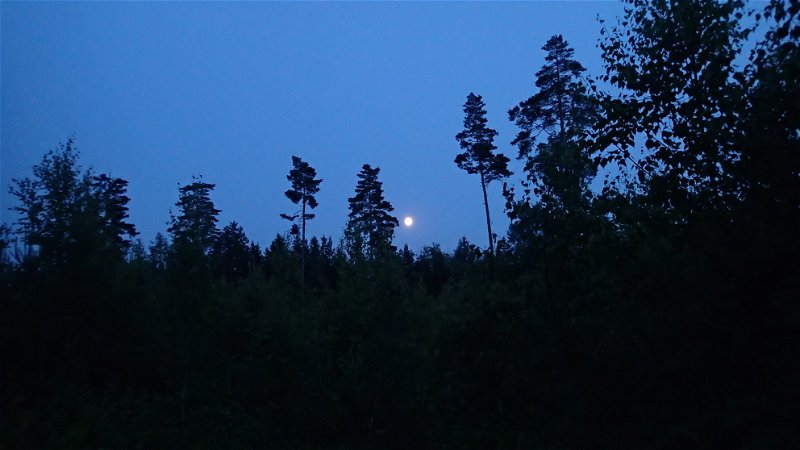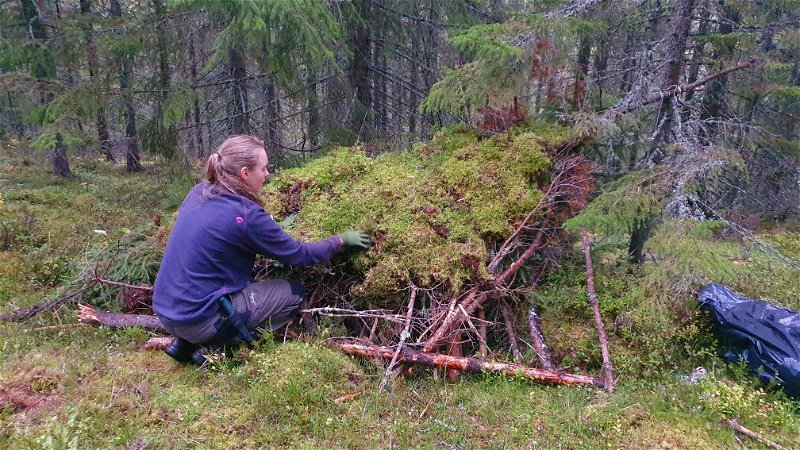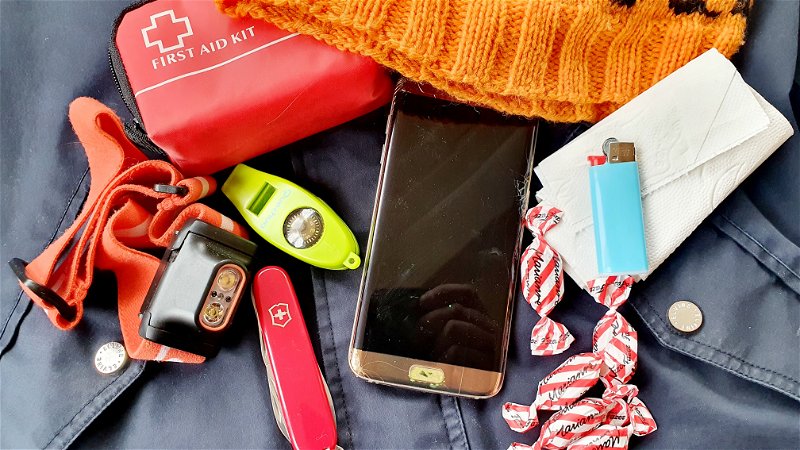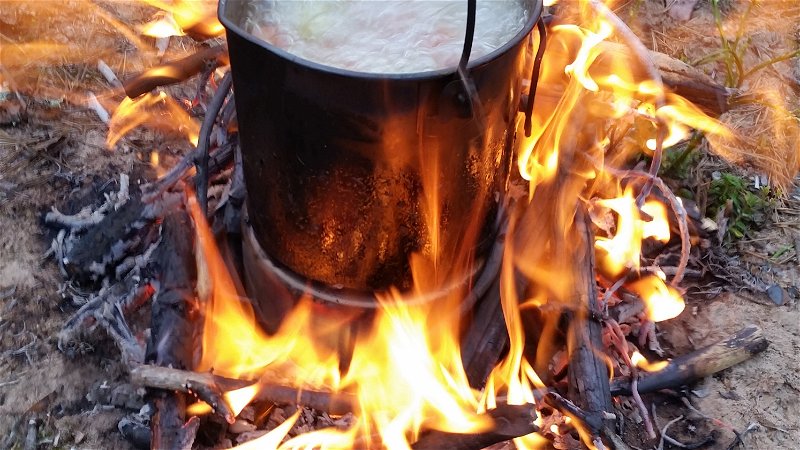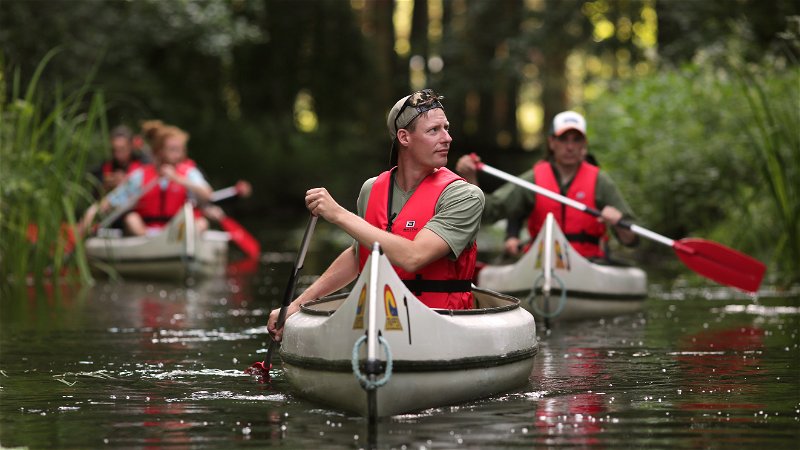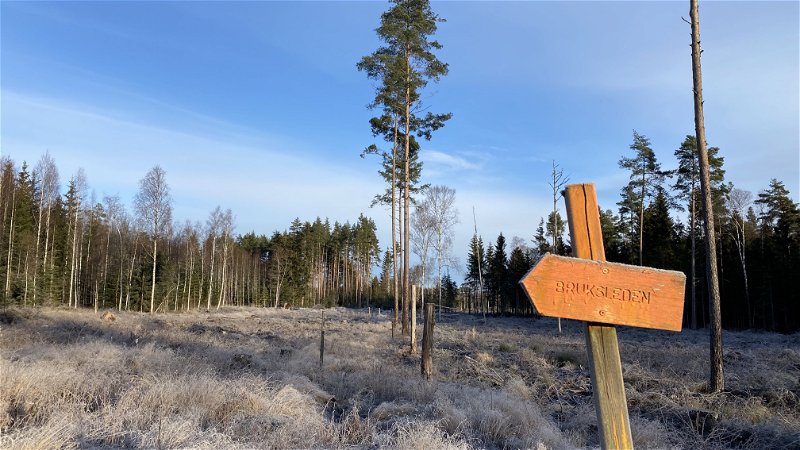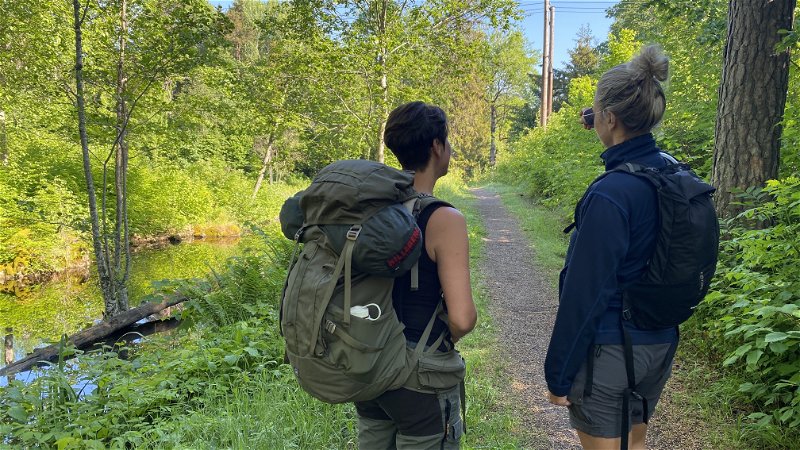Survival basics for the woods
Text and Photo: James Landosi
What to know for safer outdoor adventures
Learning about survival may, at first, feel exciting and then, in the next second, terrifying. But the astonishing thing is that we all have an innate drive to survive. As long as you manage to stay calm, you have a good chance of getting yourself out of a dangerous situation with some logical thinking and the ability to keep your awareness in the moment.
There are many different ways to survive in a perilous situation, and no single way is necessarily always the right way. Everything depends on the situation. The important thing is to do something and not be afraid to act to the best of your ability when the time calls for it!
Experience shows, however, that the better prepared you are in terms of knowledge and planning, the more your chances of survival increase. With this article, we hope to inspire you to think more about survival for safer outdoor adventures in the woods.
What is survival?
It’s possible to divide survival into two types: everyday survival and extreme survival. Everyday survival is what people devote themselves to once they step out of bed, from choosing a hat to wear based on the weather and looking both ways before crossing the street to eating healthy and maintaining good physical and mental health. Everyday survival can be seen mainly as a preventive, also known as “preparedness” or “prepping”. It’s one of the most important aspects to avoid ending up in an extreme survival situation to begin with.
Extreme survival is, fortunately, a rare situation with potentially harmful or fatal risks. In an extreme survival situation, you want to be rescued as quickly as possible and use skills like first-aid and bushcraft (building a fire, shelter, etc. in nature) while you wait. If you find yourself in an extreme survival situation, something has gone fundamentally wrong with your original plan, like enjoying a peaceful weekend hiking in a forest. But an extreme survival situation can occur in urban environments, as well as in nature. There are risks in the forest or on the water, along with in traffic or inside a city. There are just more risks that most people aren't used to in nature. We aren’t trying to deter you from going out and experiencing nature, quite the opposite. We want to give you a greater margin of safety, which in turn will provide you with a more enjoyable experience while hiking, mountain biking, and canoeing in the beautiful forests of Västmanland.
Risk assessment – what to ask yourself
Even if you're planning a simple excursion into nature, it's a good idea to ask yourself the question: What can go wrong?
It can be a bit scary to imagine scenarios that would be harrowing to actually experience. But by thinking about extreme survival situations, you are better mentally equipped to handle them if they ever occur. Here are some scenarios to think about:
- You get lost while mushroom picking and can't find your way back to your car. It's getting dark, your mobile battery is running low, and you're cold…
- While on a lakeside camping trip, you set out to make some kindling with your nice new axe. But you accidentally cut yourself on the foot really badly. You are trying to stop the bleeding…
- You’re having so much fun enjoying a beautiful and thrilling ride along a mountain bike trail! But at the end of the day, you and the bike topple at full speed straight down a rocky slope…
- While driving out to a cabin along the little forest road, your car slips into a snow-filled ditch and gets stuck. It's dark and quiet outside the car windows…
Survival readiness – solutions and techniques
Looking at the above four scenarios, we notice that a common risk factor is the cold. Maintaining your normal body temperature can be a challenge in the winter. But it can actually be challenging to avoid freezing even during seasons without snow. It’s especially true if a person gets wet, like from sweat, rain, or a lake. You should plan for and learn how to protect yourself from hypothermia in different situations. This could mean, for example, bringing extra clothes, keeping a blanket in your car, learning how to build a fire, etc.
Another common risk factor you may notice above is whether you're alone in any of the scenarios or there's someone with you. Another person can help you dress a wound, call for help, and provide moral support. There’s peace of mind when you go on outdoor adventures with a friend. And for solo trips, it’s especially important to plan thoroughly to ensure safety.
Perhaps the above imaginary scenarios have already given you some ideas, such as having a fully charged mobile phone with good coverage, a proper first-aid kit, and the right protective equipment such as a helmet for mountain biking.
When the damage is done
Once a survival situation has arisen, it is a top priority not to panic. Panic can make it hard to think logically. It can also spread to any other people in your group. Stop for a few seconds and reflect on what just happened. Then investigate the extent of the damage, regardless of whether it is an acute bodily injury, you just realised you’re lost or discovered potential hazards in need of an immediate solution. Eliminate any risks that may worsen the situation, such as more trees falling on you or fire spreading. Patch up any damage and then sit down and think about the next possible steps.
In situations where you’re unable to reach your car or other transportation to save yourself, you hopefully have the opportunity to call for help with your mobile phone. If not, you may have to rely on someone missing you and notifying authorities. If you are in a forest and think you’ll have to stay overnight, you should make yourself as comfortable as possible in a suitable and easily visible place as soon as possible. Try to build a warm and pleasant fire. Can you also build some kind of shelter? Think about your drinking water situation and how you can best signal your position to help potential rescuers. In an extreme situation, it is usually best to remain in a suitable location and wait for help. This is because a rescue can be made significantly more difficult if you are constantly moving.
The rescue
We have fantastic rescue personnel here in Sweden. Provided that authorities are aware of an emergency, rescue operations are usually carried out within hours. That being said, one should still always take responsibility by not putting oneself in unnecessarily dangerous situations and knowing how to take care of oneself. A society consisting of individuals who can take care of themselves and others is a strong society, both in everyday life and when disaster strikes.
Even if a rescue won’t take long, it can be vital that you address the emergency situation yourself while waiting. Once an accident has occurred, it is crucial that you notify authorities of the situation and then do everything you can to potentially assist the rescue operation, especially if there are bodily injuries and the risk of hypothermia.
Safety tips for the prepared survivor
- Always tell a friend when you go out into nature! Share with them the specific areas you’ll be in and when you think you’ll be back. This will make it easier to find you if you need help.
- There are advantages to always having some handy little things with you when you go out into nature, even for short trips. The list can be long, but here are some reasonable examples: A fully charged mobile phone, headlamp, lighter, knife, a colourful extra garment, first-aid kit, compass, toilet paper, and candy. These are all things that can help if you end up staying longer in the woods than planned.
- Keep your awareness in the moment. If you begin to feel stressed in an unplanned situation, sit down, take a breath, and reflect. Stress and panic do not improve your chances of making the right decision. The mnemonic device STOP can come in handy here: Stop and remember to breathe, Think through the situation, Observe your surroundings (or Orientate), and Plan what you’ll do next.
- Don't stress if you’re running low on or lack food. Trust that you’ll be able to manage without food for up to three days. Help should reach you within that time. Focus more on maintaining body temperature, a steady intake of fluids and that you are visible both from the air and on the ground.
- Think positively, never give up, help is often closer than you think!
- It’s fun to learn more about survival, crisis, first aid, and preparedness. The knowledge you gain provides margins of safety that make your outdoor adventures more enjoyable. Borrow exciting books from our libraries, browse informative websites on the internet and feel free to attend one of the inspiring survival courses offered by many groups and organisations.
Take care, and we'll see you on the beautiful Västmanland forest trails!
